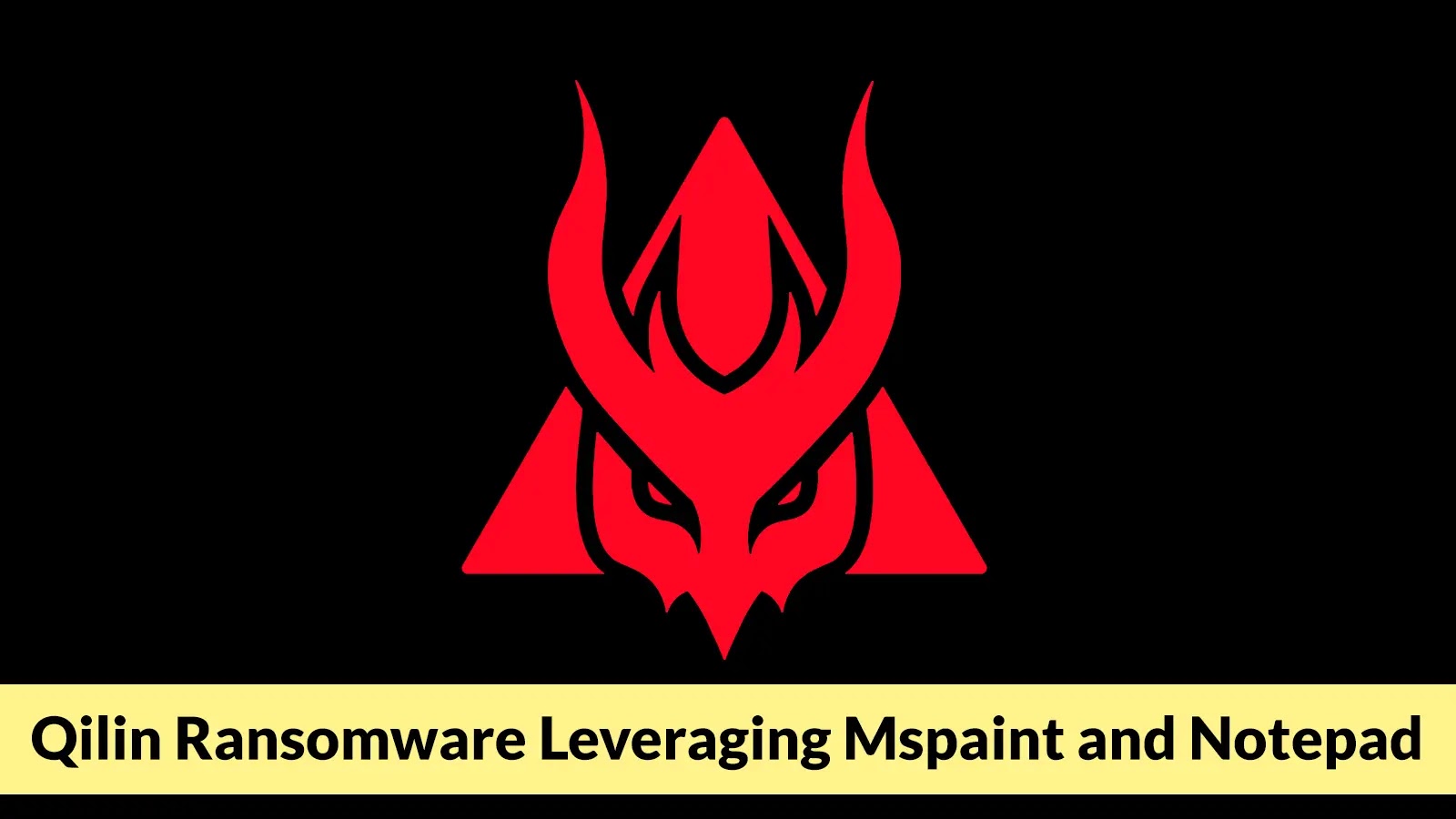
Qilin Ransomware Leveraging Mspaint and Notepad to Find Files with Sensitive Information
The relentless evolution of ransomware continues to pose an existential threat to organizations worldwide. In a disturbing development highlighting the ingenuity and adaptability of cyber adversaries, the Qilin ransomware, a prominent Ransomware-as-a-Service (RaaS) operation, has been observed employing an unconventional and highly effective tactic: leveraging common Windows utilities like MSPaint and Notepad to identify sensitive files. This sophisticated approach bypasses traditional security assumptions and underscores the critical need for advanced defensive strategies.
Qilin Ransomware: A Persistent and Evolving Threat
Qilin, initially known as Agenda before its rebrand in July 2022, has rapidly ascended to become one of the most prolific and damaging ransomware variants. Its operational tempo is alarming, with over 40 victim disclosures per month reported on its public leak site. This aggressive pace signifies a well-organized and highly motivated threat actor group. The ransomware’s global reach and continuous innovation in its attack methodologies make it a prime concern for cybersecurity professionals.
The Devious Use of Common Windows Applications
The recent discovery regarding Qilin’s operational tactics reveals a clever subversion of everyday tools. Instead of relying on complex or custom scanning utilities that might trigger security alerts, Qilin leverages built-in Windows applications: mspaint.exe and notepad.exe. This technique, while seemingly innocuous, grants the ransomware a stealthy and effective means of identifying target files.
- MSPaint (mspaint.exe): It’s hypothesized that Qilin utilizes MSPaint’s ability to open and parse various image formats. This could allow the ransomware to scan for image files containing sensitive data (e.g., screenshots of documents, confidential diagrams) or to simply check for the presence of image files as an indicator of a user’s local documents.
- Notepad (notepad.exe): Similarly, Notepad, a basic text editor, can be used to open and quickly scan text-based files. This includes configuration files, log files, documents, and other plain text sources that often contain credentials, personal identifiable information (PII), or other critical data. By interacting with these legitimate applications, Qilin can perform reconnaissance on file contents without raising immediate red flags associated with malicious file access patterns.
This tactic is particularly insidious because it blends malicious activity with legitimate application usage, making detection challenging for many endpoint detection and response (EDR) and antivirus solutions that might not flag such activity as inherently suspicious.
Ransomware-as-a-Service (RaaS) Model: Fueling Qilin’s Reach
Qilin’s success is largely attributed to its effective RaaS model. This framework allows affiliates to license the ransomware infrastructure and tools, conducting attacks in exchange for a percentage of the ransom payments. This lowers the barrier to entry for aspiring cybercriminals and exponentially increases the number of potential attacks. The RaaS model contributes to:
- Wider Distribution: A larger network of affiliates means Qilin targets a broader range of industries and geographic locations.
- Rapid Innovation: Constant feedback and competition among RaaS groups often lead to quicker development of new evasion techniques and attack vectors.
- Enhanced Persistence: The decentralized nature of RaaS makes it more resilient to law enforcement takedowns.
Remediation Actions and Proactive Defense
Defending against advanced ransomware like Qilin requires a multi-layered approach that addresses both technical vulnerabilities and human factors.
- Enhanced Endpoint Protection: Implement advanced EDR solutions capable of behavioral analysis that can detect anomalous process interactions, even when legitimate applications are involved. Look for unusual execution patterns of
mspaint.exeornotepad.exe, especially when they access a large number of files or files in unusual directories. - Regular Backups: Maintain immutable, offsite backups of all critical data. Test your backup restoration process regularly to ensure data recoverability.
- Network Segmentation: Isolate critical systems and data repositories from the broader network to limit lateral movement in case of a breach.
- User Awareness Training: Educate employees about phishing, social engineering, and the dangers of opening suspicious attachments or clicking malicious links. A significant number of ransomware attacks originate from human error.
- Principle of Least Privilege: Restrict user and application permissions to the absolute minimum necessary for their function. This limits the damage an attacker can inflict even if they compromise a user account or an application.
- Patch Management: Keep all operating systems, applications, and security software up to date to patch known vulnerabilities. While Qilin’s current tactic doesn’t directly exploit a specific CVE, robust patching reduces the overall attack surface.
- Application Whitelisting: Consider implementing application whitelisting to prevent unauthorized executables from running. While challenging to manage, it significantly limits the ability of ransomware to execute.
- Threat Intelligence: Stay informed about the latest attacker tactics, techniques, and procedures (TTPs) related to Qilin and other prominent ransomware groups.
Tools for Detection and Mitigation
| Tool Name | Purpose | Link |
|---|---|---|
| Endpoint Detection and Response (EDR) Platforms | Advanced behavioral analysis, threat hunting, and automated response to suspicious activities on endpoints. | Gartner Peer Insights (EDR) |
| Security Information and Event Management (SIEM) Systems | Aggregates and analyzes security logs from various sources to detect patterns indicative of an attack. | Splunk Enterprise Security |
| Network Intrusion Detection/Prevention Systems (NIDS/NIPS) | Monitors network traffic for suspicious activity and blocks known attack patterns. | Snort |
| Vulnerability Scanners | Identifies weaknesses and misconfigurations in systems and applications that attackers could exploit. | Tenable Nessus |
Conclusion
The Qilin ransomware’s adoption of legitimate Windows tools like MSPaint and Notepad for file reconnaissance is a stark reminder that cyber threats are constantly evolving. This tactic underscores the importance of a defense-in-depth strategy that extends beyond signature-based detection to encompass behavioral analysis and a thorough understanding of adversary TTPs. By investing in robust cybersecurity measures, continuous staff training, and proactive threat intelligence, organizations can significantly enhance their resilience against sophisticated ransomware campaigns.





